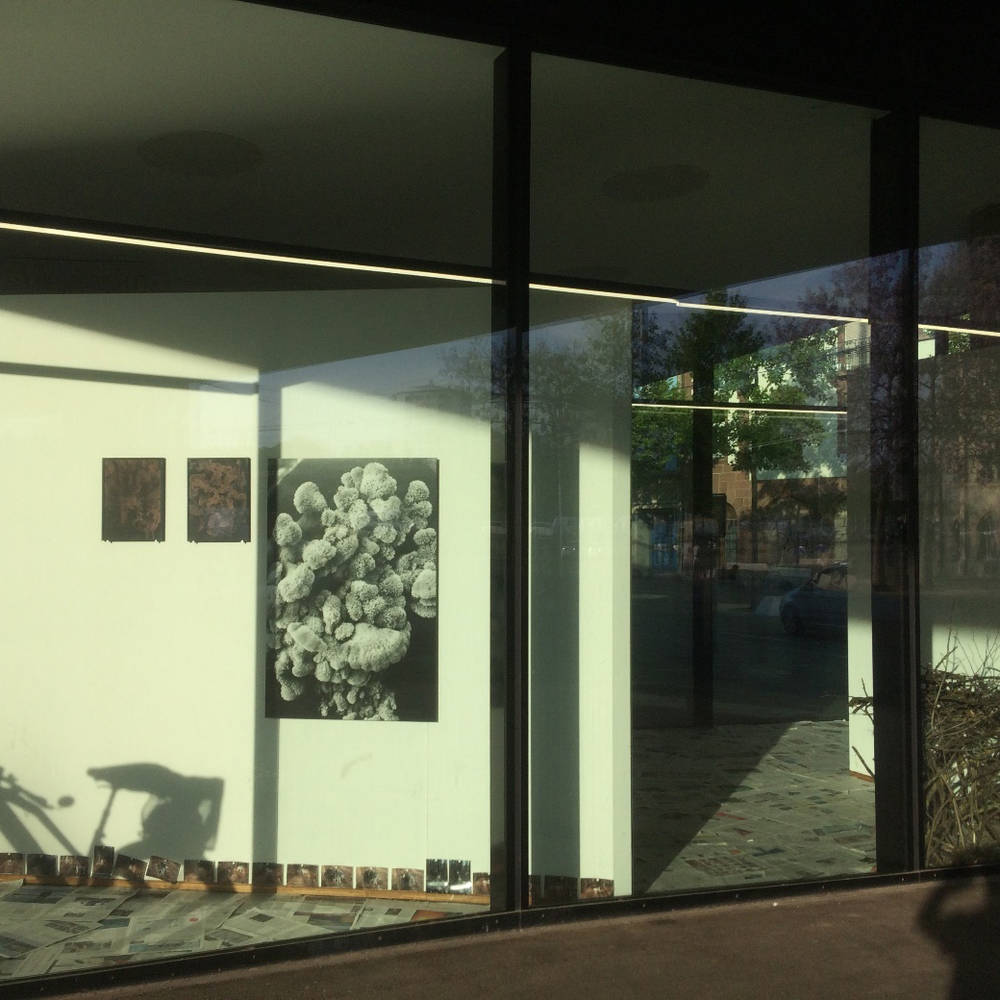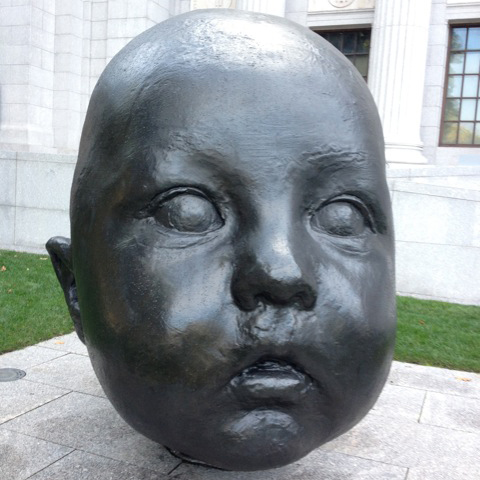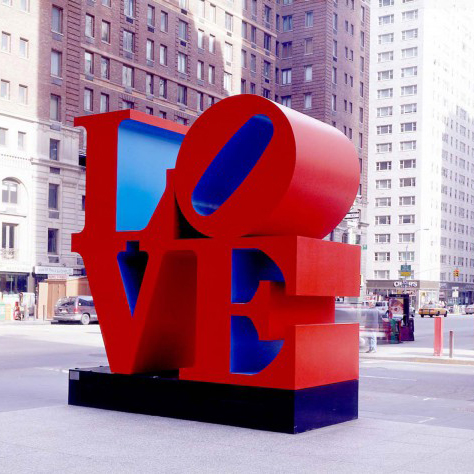There is a lot of art to discover in public spaces. Whether in London, New York, Berlin or Frankfurt, our authors reveal their hot spots.
Art in public spaces ranges from classic monuments to abstract statues to street art. Along the lines of “Art for Everyone,” a wide audience can participate in cultural change right on the doorstep. And that seems more important than ever today – most museums and exhibitions are still closed and we spend hours and hours inside our own four walls. But what kind of artworks can actually be found in our immediate surroundings? We asked our SCHIRN MAG authors.
Remi Rough & System, Girl at a Window, 2013, Dulwich Outdoor Gallery, London
This girl watches over me everytime I leave my house. The mural by street artist Remi Rough & System is one of many that are part of the Dulwich Outdoor Gallery. Established in 2013 as a collaboration between the Dulwich Picture Gallery and international street artists, the murals interpret 17th and 18th century paintings from the Picture Gallery's permanent collection.
(Marthe Lisson, author, London)
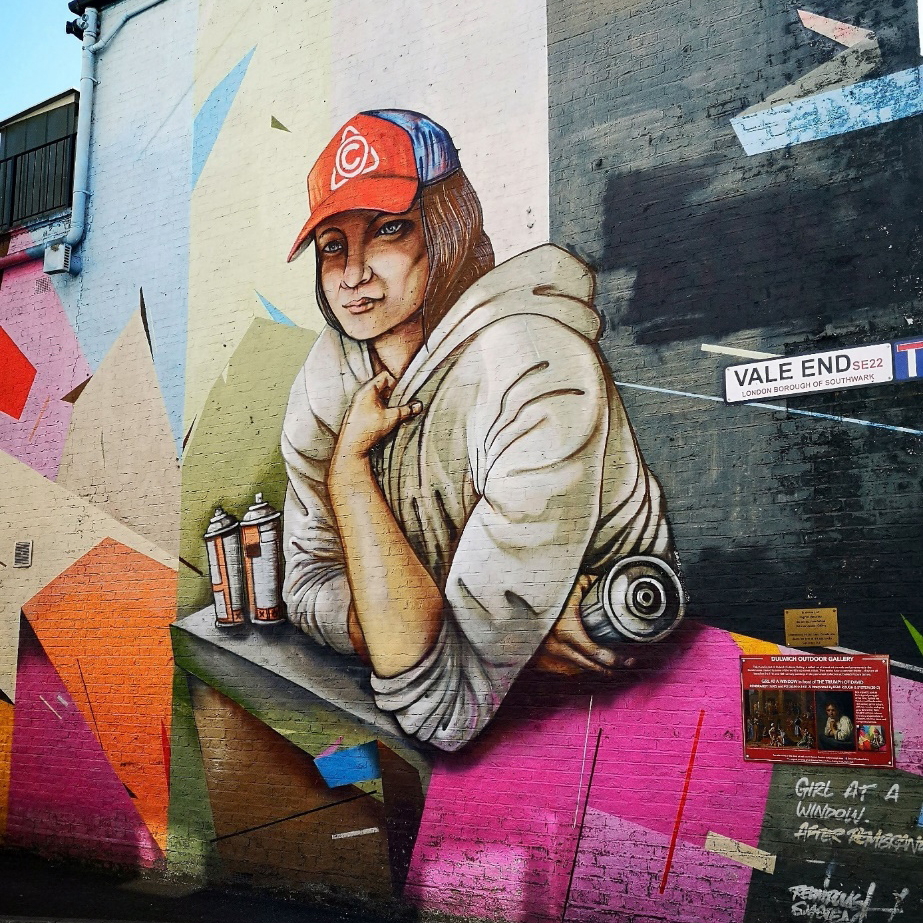
Antonio López García, Night and Day, 2008, Emerald Necklace, Boston
When strolling through the Emerald Necklace, a linear system of parks designed by Frederick Law Olmsted – the landscape architect of Central Park – I love to stop at Antonio López García’s “Night and Day” (2008), two large-scale baby heads, one with eyes open (Day) and one with eyes closed (Night), in front of the Museum of Fine Art Boston. García, famous for his hyper-realistic paintings, finished his first, larger than life sculpture after his grandchildren were born. Rumor has it, his second grandchild Carmen stood model for the sculptures. For me, it is pretty genius to place something so innocent and timeless in front of such a well-established museum.
(Natalie Wichmann, author, Boston and New York)
Peter Kern, Die Bedrohte, 1981, Volkspark Friedrichshain, Berlin
Friedrichshain in eastern Berlin is where I encountered the sculpture for the first time on a spring walk a few days ago. The way the figure sits there, small, curved and surrounded by trees, makes it seem as if she wants to disappear into herself. Nevertheless, when I discovered the sculpture is called “Die Bedrohte”, meaning “the threatened woman”, I was surprised, almost disappointed. For me, her stance conveys neither fear nor submissiveness, but rather contentment and a sense of calm that is almost infectious.
(Marie Sophie Beckmann, author, Berlin)

Saskia Groneberg, Der Weg, 2015 (2020), Kunst-Insel am Lenbachplatz, Munich
The “Kunst-Insel am Lenbachplatz” is a traffic island featuring artworks by Munich-based artists in a large, 5 x 5-meter format located directly next to a tram stop. Currently on display is “Der Weg” (“the path”) by Saskia Groneberg. The photographs show a man in jeans and jacket carrying a pen and a pad in his hand as he walks alone along a wooded path. The images were installed shortly before the official shutdown in Germany, but seem oddly fitting for the current situation.
(Toni Meyer, photographer, Munich)
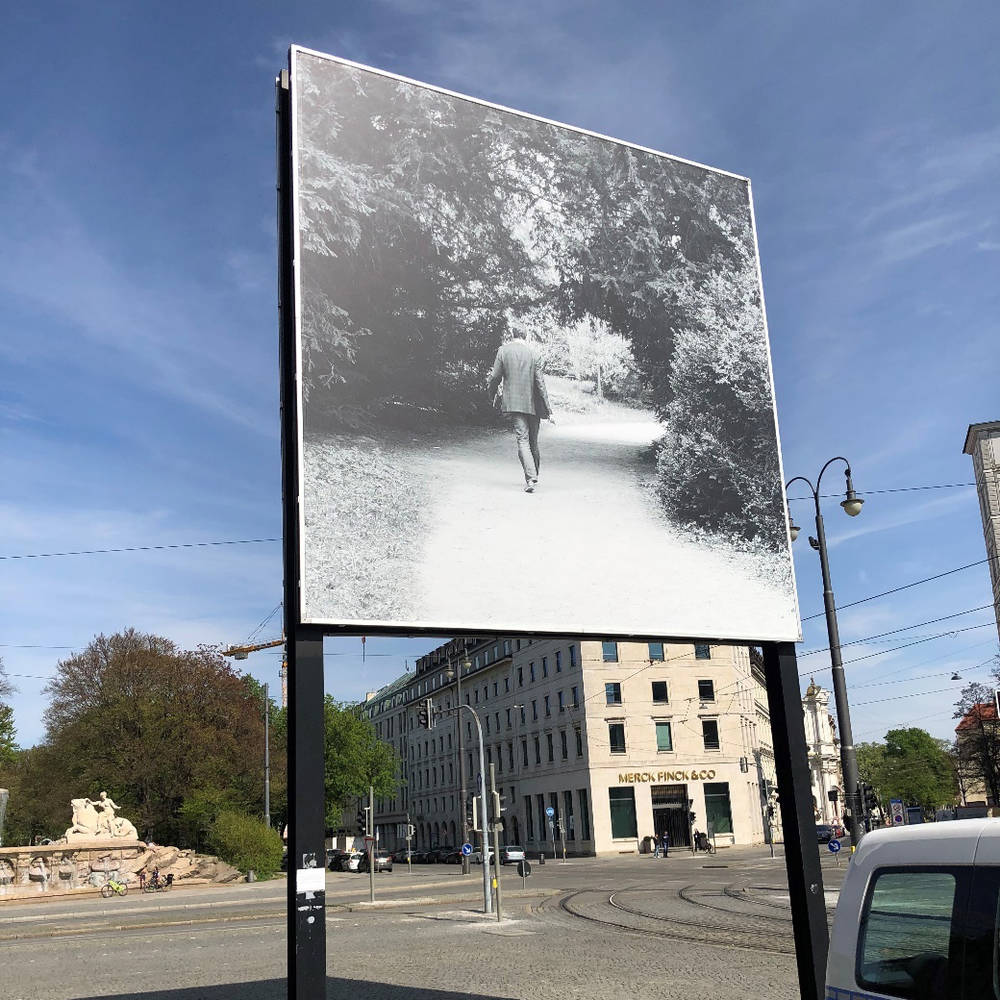
Giuseppe Penone, Gravity and Growth, 2015, European Central Bank, Frankfurt
Fun fact: Giuseppe Penone’s “Gravity and Growth” may be displayed outside, in front of a building, but thick iron bars mean it is not exactly freely accessible. I find myself simultaneously intrigued and vexed each time I walk past it by the combination of the arte povera style, the title of the work, and everything the ECB stands for.
(Lisa Beisswanger, author, Frankfurt)
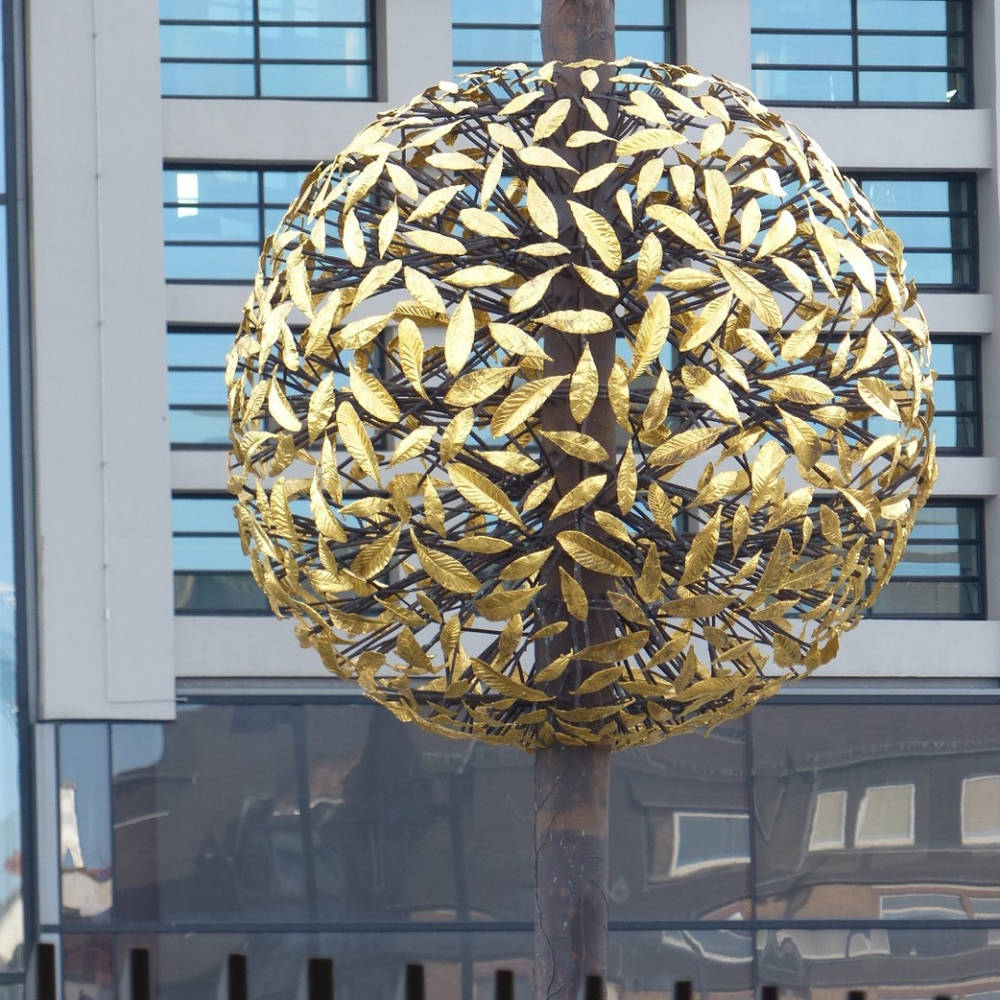
Robert Indiana, LOVE, 1966, Central Park and MoMA, New York
It is an oldie, but a goodie! Robert Indiana’s LOVE sculpture (with the L and O resting on top of the V and E) just down the street from Central Park and MoMA is one of my favorite public art pieces in NYC. The first version of this typo was part of a MoMA Christmas card in 1965. I like that the piece itself, originally inspired by Indiana’s childhood of going to Christian Science Church, shed its intended meaning and gained a life of its own. For a lot of people, it symbolizes the love for New York City itself.
(Natalie Wichmann, author, Boston und New York)
Keith Haring, Untitled (Boxers), 1987, Potsdamer Platz, Berlin
One can only guess how the red and blue painted steel sculpture “Untitled (Boxers)” by Keith Haring was first received in West Berlin at the time. After all, most of the art in public spaces in West Germany consisted of modernist lumps of bronze or rusty steel monstrosities. Now, on one side of the sculpture stand the dreary buildings of the Potsdamer Platz, while opposite is Hans Scharoun’s boldly interlocking State Library, a design from the late 1960s and also a kind of time machine to the old Federal Republic. Before the lockdown I often worked here, and I rather miss the two intertwined boxers by the New York artist. Like old colleagues.
(Philipp Hindahl, author, Berlin)

Suzanna Zak und Dries Segers, Our companion, our other, 2020, Vitrine Gallery, Basel
Four years ago, the Vitrine Gallery, which was founded in London in 2012, and opened an exhibition space at Vogesenplatz in Basel. Its innovative exhibition concept also works in times of shutdowns: Visitors can view the exhibited works 24/7 from the public square through a glass display window. Currently showing are Dries Segers and Suzanna Zak, running until May 24.
(Tobias Ertl, author, Basel)
